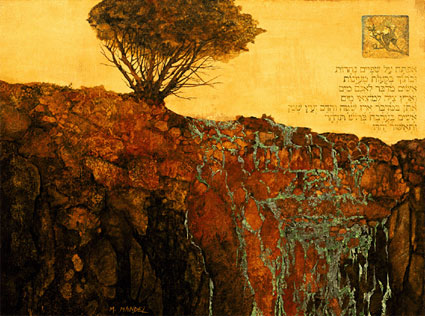Angels in the Trees – 1
Desert Trees for a Crystal House
Trees are elementary Bible symbols. James Jordan writes:
We have noted that God’s people are spoken of as trees. Genesis 2 sets up the connection by saying that both men and trees come out of the ground (Genesis 2:7, 9). We have mentioned already such passages as Psalm 1 and Judges 9, where trees symbolize men. An interesting sidelight on this symbolism is provided in Mark 8:24, where the blind man healed by our Lord initially saw men as trees walking.
Trees represent men, and trees are found in association with men. Such associations often convey imagery to us, and so let us briefly trace this imagery as it appears in Scripture. To begin with, of course, is the Garden of Eden, a planting of trees and also the first planting of humanity. Cast from Eden, man could only expect the scorching sun; it is a sign of God’s blessing whenever we find the righteous dwelling at groves of trees.
I recommend reading this entire chapter, Trees and Thorns (from page 81) in Through New Eyes: Developing a Biblical View of the World [PDF]. It is wonderful stuff.
The Tabernacle furniture was made of acacia wood.[1] It symbolised the wilderness. The tree was most common in stream beds. It pictured a godly man planted in the Word. It pictured Eden, an oasis garden supported by springs.[2]
Just as the saints plundered Egypt and Amalek, they plundered the waste places of gemstones and quality wood for the worship of God.[3] Eventually, these were brought into Solomon’s Temple, which was made of “Promised Land” timbers, cedar for the outer areas and olive for the holiest places.
The acacia wood was tried and tested in the wilderness, but it came out glorified, covered in fine gold. It was carried from the outlying lands back to Eden by the saints. The Tabernacle furniture always symbolised God’s plan for the nations. The gospel flows out as water for the nations, and the resulting glory of their kings is brought back to the Temple.[4] For every man, the wilderness test is the way to the judicial seat at God’s right hand.
______________________________
[1] I need to fix this in my book!
[2] The word “mist” in Genesis 2 should be translated “spring.” The symbolism of the Temple as a garden over a spring which sends rivers into the world can also be found in Psalm 24.
[3] The Bible often pictures worship as commerce, “buying and selling.” See Gold, Onyx and Bdellium.
[4] Note that when there is a “backwash” of idolatry (sewerage) into the Temple, the children of the compromise, the “mighty men” of the wilderness, the sons of God in Genesis 6, Tyre and Sidon in Ezekiel, and the four empires from Daniel and Revelation, are destroyed in the “waters of Noah”. Each time, the Lord planted a new Eden and then wiped out the old one.
Picture: Water in the Wilderness by M. Mandel


























